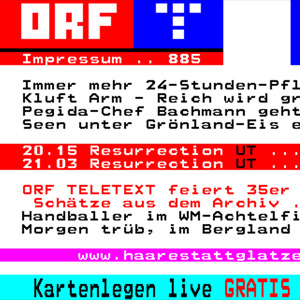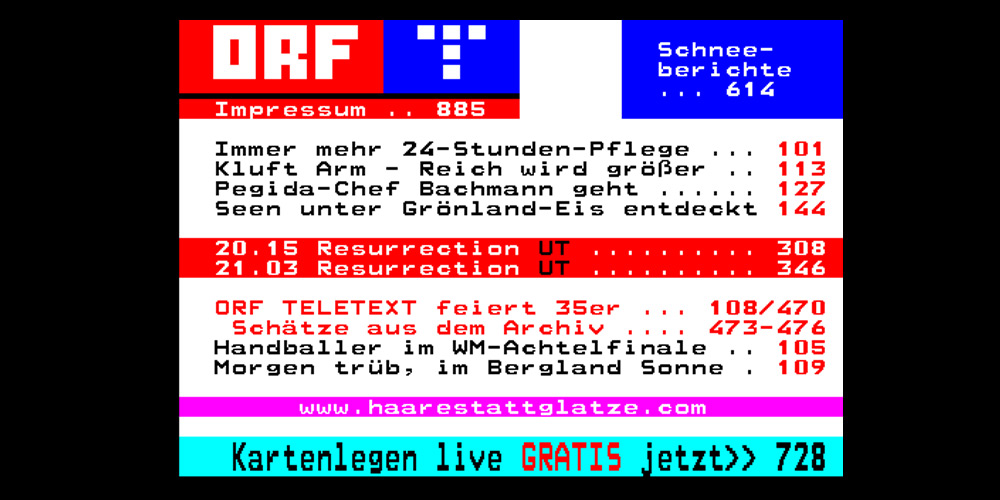
It all began on January 21, 1980, when 64 screen pages filled the vertical blanking interval of the ORF – Austrian Broadcasting Company’s television signal with additional information. And the ORF thus became Europe’s third public broadcasting system to provide its viewers with teletext service. We recently had a chance to chat with former ORF General Manager Gerhard Weis, whose telephone call to the BBC led to the ORF purchasing the British network’s old equipment and deploying it in Austria.
You got the ball rolling that led to the introduction of teletext in Austria in 1980. How was the collaboration with the BBC back then?
Gerhard Weis: The collaboration with the BBC was actually quite rudimentary. I happened to read that the BBC was in the process of upgrading their equipment, so I called them up and asked what they planned to do with the old stuff. And very quickly, it was ours. But that’s all there was to it. We couldn’t learn anything from the BBC because they had a totally different understanding of teletext’s role. By the way—at the BBC, the system was originally referred to as Ceefax. The term teletext didn’t emerge until later.
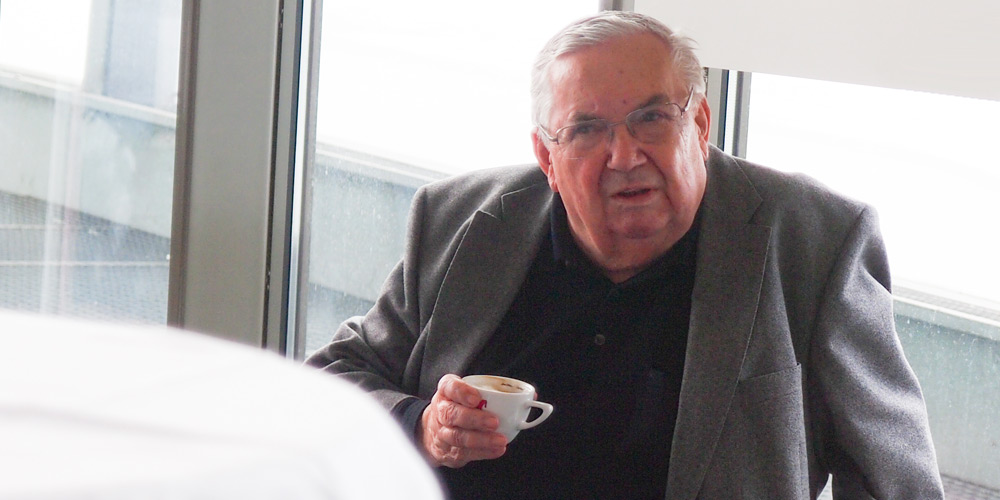
Gerhard Weis during the press conference at the Ars Electronica Center, Photo: Martin Hieslmair
What exactly prompted you to give them a call?
Gerhard Weis: An article in the New York Times reported that because the BBC’s service had been such a resounding success, they were expanding it and purchasing new equipment. And then it went on to explain approximately what teletext is, but it was only a superficial description. That’s why I called them up: to find out what this is all about, and what they’re doing with the old equipment. That was it.
Weren’t you the least bit hesitant, since there were no receivers in Austria at the time? Didn’t you want to do this on a test basis first?
Gerhard Weis: No, no experimentation. We had already given a lot of thought to the potential inherent in this technology and we quickly came to the conclusion that it was enormous. So, we said: OK, then let’s do it!
After all, just think about some of the other developments in the history of technology—the invention of the telephone, for instance. In the U.S. Congress in Washington, a hearing was held in which telephony was explained in terms of a real-time conversation between a man in New York and a man in Baltimore. And certain Republican congressmen reacted to this by asking what these two fellows had to say to one another. So there was this sense of skepticism, but the man who had come up with the telephone was already fully aware of his invention’s potential.
It was the same thing with the introduction of the automobile. It would never have been invented or put on the market because there were virtually no preconditions in place—no paved streets, no gas stations, no workshops, no street maps. So, where’s the justification for the whole effort? But it was put on the market and proliferated dramatically because people simply found it useful. And that’s how it’s progressed ever since.
Let’s get back to teletext. In the mass media—whether we’re talking about the internet, printed publications or TV—it’s apparent that the visual component is becoming bigger and more prominent to the point that it’s even become intrusive.
Gerhard Weis: This isn’t a problem at all. Of course, teletext also has potential in this respect, but the essence of it is that users get access to condensed information and services that they really need, and they get them without delay. That’s the point.
I also believe that teletext is the vindication of journalism, which pundits have repeatedly pronounced dead.
Consider, if you will, the information spewed forth by the internet—this is a hodgepodge of details that users can hardly come to grips with unless they’re prepared to spend a whole day studying up on a particular theme. It’s the job of journalists to take this material and distill it down into a succinct communiqué that efficiently delivers useful knowledge to a large number of users.
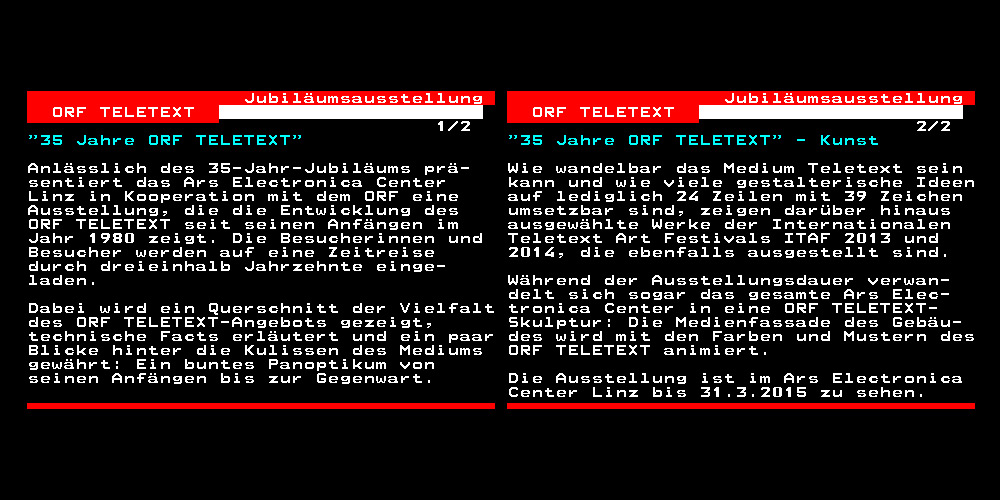
Considering today’s social media, where short messages are sent in real time and the number of people sending messages has literally exploded. How do you see this development?
Gerhard Weis: Well, we’ll see what comes of this. I’ll make no bold prediction. All I know is that teletext will survive this too. I can’t say whether the other social media will establish themselves and achieve this status. Why not? This is no threat to us.
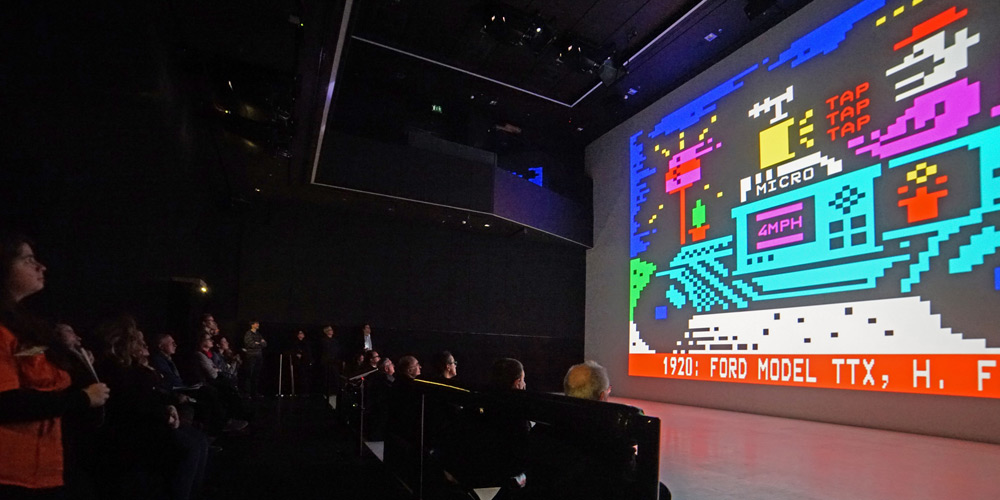
At the opening of the exhibition at the Ars Electronica Center artistic works of the International Teletext Art Festival (ITAF) were shown in the Deep Space. Photo: Robertba
What do you see as the big attraction for artists to work with teletext?
Gerhard Weis: That I do not know. Never in my wildest dreams did I foresee this becoming an artistically useful medium. If that’s how it is, then: So be it! I welcome that.
Do you know? The exhibition “35 Years of ORF TELETEXT” will be opened until end of March 2015 at the foyer of the Ars Electronica Center.
